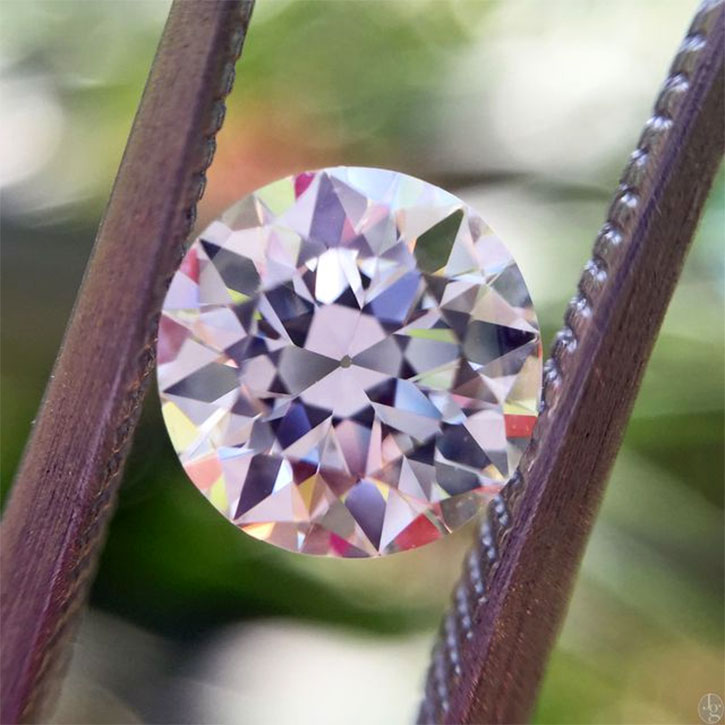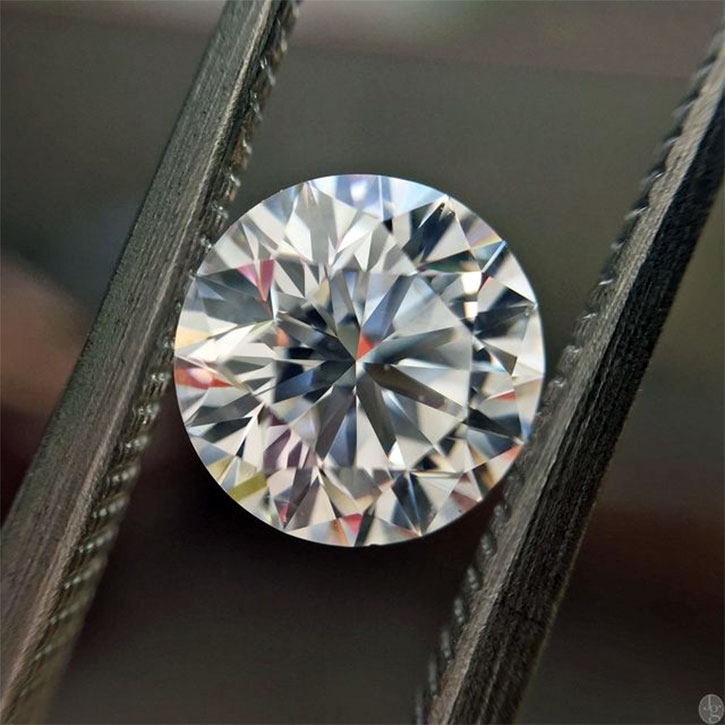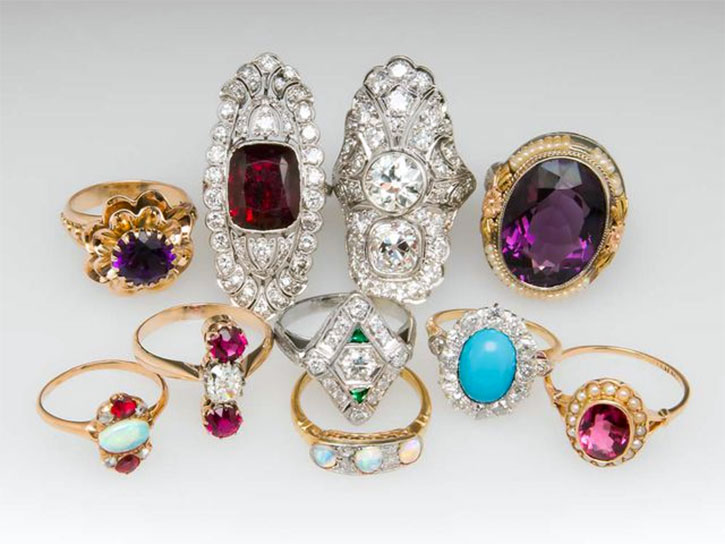Antique Diamonds Without Settings
Rose Cut Diamond

Sometimes it’s nice to appreciate diamonds without a setting. This is especially true in two instances: when you are trying to learn more about diamond cuts and when you are purchasing an engagement ring setting and diamond separately. You might even find yourself doing both of these things at the same time.
When it comes to antique diamond cuts, first it is important to be aware that antique diamonds are usually judged with a different set of eyes than those that judge modern cut diamonds.
Up until recently, loose antique diamonds that somehow lost their setting through wear or a family melting down the metal were recut into the more “desired” cut. Now, however, more and more people are beginning to understand and appreciate the unique beauty behind these heirloom stones.
There are six really important antique cuts to be aware of: rose cut, old mine cut, antique cushion cut, old European cut, transitional cut, and antique Asscher cut. One of my favorite antique jewelry dealers, Jewels by Grace, has a very well rounded collection of loose antique diamonds, and her pictures are incredible, so it is the perfect opportunity for me to showcase these six cuts as well as give you a great option for purchasing them if you want to add some character to your engagement ring or, if you’re like me, your right-hand ring.
Above: Rose cut diamonds have been used for centuries, but they are seen a lot in Georgian and Victorian era jewelry. This 1.67ct rose cut diamond shows off the characteristic flat bottom and faceted crown.
Keep scrolling through the slideshow to learn more about the five other iconic antique diamond cuts.
Old Mine Cut Diamond

The evolution of the round brilliant cut diamond arguably began with the old mine cut diamond. This diamond cut dates back to the 18th century and features a slightly out of round shape with a high crown, a small table, and a large open culet. These diamonds were hand cut, so no two are exactly alike, making this 1.10ct old mine cut diamond one of a kind.
Antique Cushion Cut Diamond

This is my favorite antique diamond cut and can often be confused with an old mine cut because the characteristics are similar. The biggest difference between an old mine cut and an antique cushion cut is that the shape of the cushion cut is more rectangular and more chunky at the edges. This diamond cut is the beginning of the modern cushion-cut diamond, but I actually would prefer this 3.48ct antique cushion cut over a modern one because I love the open culet and the rich saturation of color.
Old European Cut Diamond

As diamond cutters began refining their diamond cutting skills, the old mine cut eventually evolved into the old European cut diamond that dates to the 19th century and was used heavily during the Victorian, Edwardian, and Art Deco eras. This is probably the most common antique diamond cut on the market today, but it was also commonly recut into modern round brilliants. After looking at this 2.01ct old European cut diamond, how could you ever think to recut it?!
Transitional Cut Diamond

A transitional cut diamond is exactly that, transitional. If you filter back and forth between the previous slide and this one, it may be difficult to tell the difference between the two, but the subtle differences are what help date transitional diamonds. These diamonds were cut anywhere between 1900 and 1925 before the full introduction of the round brilliant cut diamond. Transitional cut diamonds are a bit more sophisticated in that they have a bigger table, lower crowns, smaller culets, and more facets much like a round brilliant cut diamond…
But it’s not quite a round brilliant, and that’s okay. If you’ve learned anything about me by reading this article, you might anticipate me saying that I actually prefer transitional cut diamonds to round brilliant cuts. They do not have the exact scientifically derived proportions for optimal brilliance like round brilliants, but they have an open, bright, and unique feel. This .94ct transitional cut diamond with a wide facet pattern is a gorgeous earlier transitional cut example likely dating to the early 1900’s.
Antique Asscher Cut Diamond

The Asscher cut is by no means a common antique diamond cut, but it is an important mention because it marks the beginning of trademarked cuts. The cut was created in 1902 by the Asscher brothers and has been regaining popularity so much in recent years that a modern Asscher cut was brought to the market within the past twenty years. This 2.39ct antique Asscher cut diamond has a classic open culet and concentric square facets.
Round Brilliant Cut Diamond

Now I couldn’t show off all the antique diamond cuts without giving you a great example of a modern round brilliant cut diamond. This 1.00ct diamond has distinct arrow facets and incredible clarity. Not all round brilliant cuts are bad or boring; it just all depends on what you are looking to get out of your diamond. You will notice there is no open culet and many more facets on the round brilliant than its antique counterparts.

 Timeless Antique Rings
Timeless Antique Rings